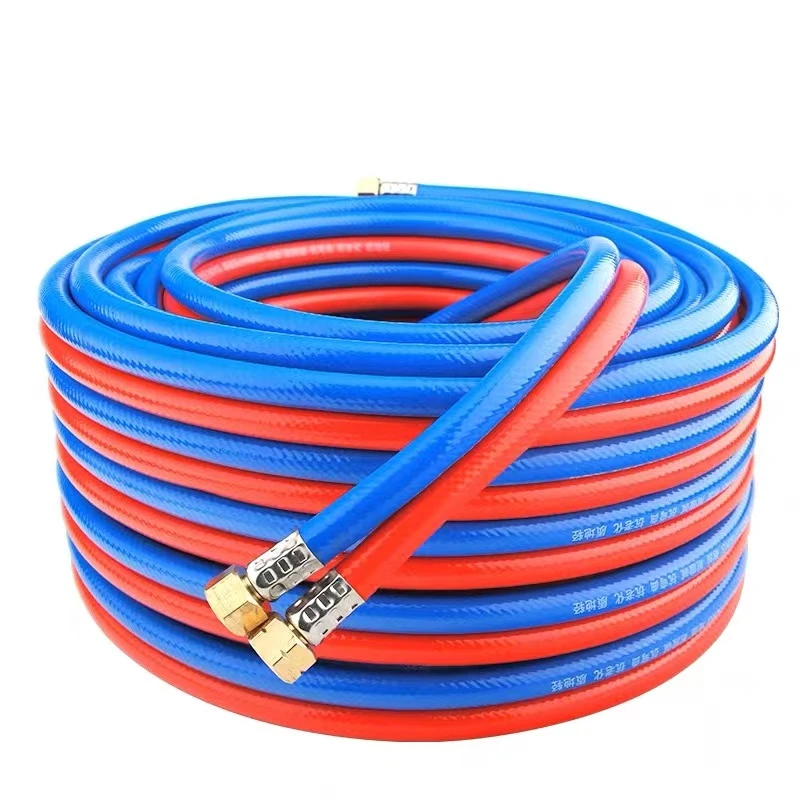pu air hose
Understanding PU Air Hose Characteristics, Applications, and Benefits
Polyurethane (PU) air hoses are an essential component in various industries, known for their durability, flexibility, and resistance to wear and tear. Often used in pneumatic applications, these hoses are designed to transport compressed air and other gases efficiently. This article will delve into the characteristics, applications, and advantages of PU air hoses, highlighting their significance in modern industrial settings.
Characteristics of PU Air Hose
PU air hoses are made from thermoplastic polyurethane, a material that offers a unique combination of flexibility and strength. One of the standout features of these hoses is their lightweight nature, which facilitates ease of handling and installation. They can coexist with other types of hoses but often outperform them in terms of durability.
One of the notable properties of PU air hoses is their resistance to abrasion and cuts. This makes them suitable for harsh operational environments where exposure to sharp edges, rough surfaces, or heavy machinery is common. Furthermore, PU hoses are generally resistant to oil, grease, and many chemicals, increasing their versatility across different applications.
Another significant feature is the temperature resistance that PU air hoses offer. They can operate effectively in a wide range of temperatures, typically ranging from -40°C to +80°C, making them suitable for both hot and cold environments.
Applications of PU Air Hose
PU air hoses find applications in various industries, including automotive, manufacturing, construction, and food processing. In the automotive industry, they are commonly used for air tools such as impact wrenches and spray guns, providing a reliable solution for compressed air distribution.
pu air hose

In the manufacturing sector, PU air hoses are utilized in pneumatic conveying systems, efficiently moving materials like powders and granules. They are also employed in production lines for operating machinery powered by compressed air.
Construction workers rely heavily on PU air hoses for tools such as nail guns, concrete vibrators, and various pneumatic devices. Their lightweight composition reduces worker fatigue, while their durability ensures a longer lifespan, even in challenging conditions.
In the food processing industry, the non-toxic nature of PU air hoses allows them to be safely used in applications where hygiene is paramount, ensuring that the air used in food packaging and processing is free from contaminants.
Benefits of Using PU Air Hoses
The benefits of PU air hoses extend beyond their physical properties. Their flexibility means they can easily navigate tight spaces and corners, which is especially beneficial in intricate machinery setups. Moreover, their ability to return to their original shape after bending minimizes kinks and tangles, ensuring a smooth flow of air.
Cost-effectiveness is another advantage. Although PU hoses may have a higher initial investment than traditional rubber hoses, their longevity and resilience can lead to savings in the long run. With fewer replacements needed and reduced downtime due to hose failures, businesses can maintain their operational efficiency.
In conclusion, PU air hoses are indispensable in many industries due to their remarkable characteristics and applications. Their durability, flexibility, and resistance to various environmental factors set them apart from other options on the market. For businesses looking to enhance their pneumatic systems, investing in PU air hoses can yield significant long-term benefits. As technological advancements continue, PU hoses are likely to evolve further, enhancing their performance and reliability in industrial applications.
-
Top Quality Oxy Acetylene Hoses for Sale Fit for Welding DemandsNewsJul.28,2025
-
The Future of Pneumatic Air Tubes in IndustryNewsJul.28,2025
-
Superior and Reliable LPG Hose Pipe Solutions for Every NeedNewsJul.28,2025
-
Exceptionally Durable and Versatile Premium Braided PVC TubingNewsJul.28,2025
-
Best Adapters for Connecting Garden Hose to PVC Pipe ConnectionsNewsJul.28,2025
-
The Essential Role of LPG Hoses in Safe and Efficient Gas DistributionNewsJul.16,2025














